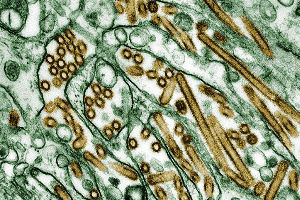Avian Influenza confirmed on two Canadian farms

Preliminary testing by the Canadian province of British Columbia has confirmed the presence of H5 avian influenza on two farms: a turkey farm in Abbotsford and a broiler breeder farm in Chilliwack.
Around half of the 11,000 turkeys on the farm at Abbotsford died from the disease, while 1,000 of 7,000 broiler chickens at the second farm near Chilliwack died, said Jane Pritchard, the chief veterinary officer of the province. All of the remaining birds on the farms, which are five miles apart, will be killed.
The Canadian Food Inspection Agency (CFIA) has placed the two farms under quarantine to control disease spread and the industry sector has been notified to adopt enhanced biosecurity practices. Further testing by the CFIA is underway to confirm pathogenicity and to determine the precise subtype and strain of the virus. Initial tests for the disease were conducted on December 1 at a British Columbia Ministry of Agriculture laboratory in Abbotsford, after both operations experienced sudden deaths of birds over the weekend.
All birds on the infected premises will be humanely euthanized and disposed of, in accordance with provincial environmental regulations and internationally accepted disease control guidelines. As lead response agency the CFIA will ensure the quarantine of the infected farms, and determine a surrounding surveillance zone for further testing. The CFIA will also lead on required depopulation of birds, while the Province will provide technical support on required carcass disposal. Once all birds have been removed, the CFIA will oversee the cleaning and disinfection of the barns, vehicles, equipment and tools to eliminate any infectious material that may remain.
The Province of British Columbia, the CFIA, the owners of the infected birds, and the poultry industry are working closely together to manage the situation. Both levels of government will work with the poultry industry to address issues as they emerge. The Canadian poultry sector currently practices a high level of biosecurity that reduces the risk of disease spread.













